warspite1
Posts: 41353
Joined: 2/2/2008
From: England
Status: offline

|
Here is the first of the Essex-class with a combat record. This counter covers the Great Marianas Turkey Shoot.
[4021 Bunker Hill - by Robert Jenkins]
.B Engine(s) output: 150,000 hp
.B Top Speed: 33 knots
.B Main armament: 12 x 5-inch (127mm), Variable number of 20mm and 40mm guns
.B Aircraft: 93
.B Displacement (full load): 36,000 tons
.B Thickest armour: 4-inch (belt)
.P The Essex-class aircraft carriers were the most famous carrier-class of
the Second World War. The US Navy, had originally conceived the class as being
25,000 ton, improved Yorktowns that would be able to operate the new, larger
aircraft then under development. The planned displacement rose during the final
design phase as extra armour and anti-aircraft (AA) protection was added.
.P The Essex-class were actually split into Essex and Ticonderoga-classes with
the only noticeable difference being the increased length of the later ships
which allowed the placing of two quadruple 40mm guns at the bow. These were
below the flight deck and so did not interfere with aircraft operation.
.P The AA package was comprehensive and supporting the twelve 5-inch guns were a
variable number of 40mm and 20mm close-range weapons.
.P US carriers did not have armoured flight decks, but the Essex-class had
horizontal protection at the hangar deck level with 2.5-inch armour covering the
vital machinery and magazine spaces. Belt armour was 4-inches at its thickest.
.P The number of aircraft they were able to carry was similarly impressive. The
make-up of an air group altered during the war, but for the war`s final year was
seventy-three fighters, fifteen dive-bombers and fifteen torpedo bombers. These
aircraft were able to call on around 190,000 Imperial gallons of aviation fuel.
.P The carriers were fitted with one hanger that was served by three lifts. On-
deck, there were originally three catapults but one was later removed. Later
models of the two remaining catapults were capable of launching 18,000lbs at 78
knots.
.P Thirty-two carriers were planned, but the last six were cancelled in March
1945 before they had been laid down, and a further two ships were cancelled just
before the war ended.
.P USS Bunker Hill, named, like many US Navy carriers, after battles of the
American War of Independence, was commissioned in May 1943. She was a carrier
of the Essex group.
.P After work-up she was sent to the Pacific and in 1943, took part in a number
of operations against the Japanese. This included the air strikes against Rabaul
in November, where she was part of Task Force (TF) 38, US 3rd Fleet under
Rear-Admiral Sherman. This was followed by Galvanic; the operation to re-take
the Gilbert Islands later that month. For this operation Bunker Hill was part of
Task Group (TG) 50.3 under Rear-Admiral Montgomery. In December, she finished
the year supporting two raids. The first was as part of TG.50.8 against the
island of Nauru and the second, as part of TG.50.2 against Kavieng, New Ireland.
.P At the start of 1944, Bunker Hill, now part of 5th Fleet, took part in an
attack on a convoy off Kavieng, during which two Japanese cruisers were damaged.
At the end of that month US attention was turned to re-taking the Marshall
Islands; Operation Flintlock. For this, Bunker Hill was part of TG.58.3 under
Sherman, one of four large TG`s that helped to neutralise the enemy defences on
Kwajalein ahead of the actual invasion. In mid-February, three TG`s were sent to
attack the Japanese naval base and fortress of Truk; Operation Hailstone. Bunker
Hill`s TG was one of these, and some of her aircraft sunk the cruiser Naka
during this highly successful operation.
.P In March, the US Navy launched Operation Desecrate; carrier strikes against
Palau, Yap and Woleai. For this, Bunker Hill was part of TG.58.2 under Rear-
Admiral Montgomery. However, the Japanese were warned of the advance of the US
ships and their fleet sailed from Palau to avoid attack.
.P In April, Bunker Hill took part in the landings at Hollandia in New Guinea.
She remained in the same TG for this operation which was responsible for
supporting the landings at Humboldt Bay.
.P Halfway through 1944 and the US juggernaut continued rolling back the
Japanese defences. Next stop was the Marianas. This operation opened with
carrier strikes from the four TG`s against all islands in the Marianas. Bunker
Hill was still part of TG.58.2 for this operation, code-named Forager. Saipan,
the first of the islands, fell on the 9th July. However, before that, a naval
battle was fought; The Battle of the Philippine Sea, which was the largest
carrier battle of the Second World War and a battle that became known as the
Great Marianas Turkey Shoot.
.P TF58 was under the command of Vice-Admiral Mitscher. He had at his disposal
the following ships: TG.58.1, the fleet carriers Hornet and Yorktown, the light
carriers Belleau Wood and Bataan; the heavy cruisers Boston, Canberra and
Baltimore; the light cruisers Oakland and San Juan and fourteen destroyers.
TG.58.2 contained the fleet carriers Bunker Hill and Wasp; the light carriers
Monterey and Cabot; the light cruisers Santa Fe, Mobile and Biloxi and twelve
destroyers. TG.58.3 contained the fleet carriers Enterprise and Lexington
(Flagship of Mitscher); the light carriers Princeton and San Jacinto; the heavy
cruiser Indianapolis; the light cruisers Montpelier, Cleveland and Birmingham
and thirteen destroyers. TG.58.4 contained the fleet carrier Essex; the light
fleet carriers Cowpens and Langley; the cruisers Vincennes, Miami, Houston and
San Diego and fourteen destroyers. In addition, TG.58.7 (the Battle Line),
consisted of the battleships Washington, North Carolina, Iowa, New Jersey, South
Dakota, Alabama and Indiana; the heavy cruisers Wichita, Minneapolis, New
Orleans and San Francisco and fourteen destroyers.
.P The Japanese had to make a stand rather than simply let the Americans take
one island after another and had gathered their Mobile Fleet under the command
of Vice-Admiral Ozawa. This fleet consisted of: the Van Force with the light
carriers Chitose, Chiyoda and Zuiho; the battleships Yamato, Musashi, Kongo and
Haruna; the heavy cruisers Atago, Maya, Takao, Tone, Chikuma, Chokai, Kumano and
Suzuya; the light cruiser Noshiro and nine destroyers. Force A consisted of the
fleet carriers Taiho (Flagship of Ozawa), Zuikaku and Shokaku; the heavy
cruisers Myoko and Haguro; the light cruiser Yahagi and nine destroyers. Force B
contained the fleet carriers Junyo and Hiyo; the light carrier Ryuho; the
battleship Nagato; the heavy cruiser Mogami and ten destroyers.
.P The Japanese hoped to reverse the result at Midway, where it was the
Americans that had a smaller carrier air component, but had the advantage of
land based aircraft. This operation, named A-Go, was designed to smash the US
Fleet in one decisive encounter. Unfortunately for the Japanese, they guessed
wrong about the target for the US attack and so concentrated their land based
aircraft in the Central Pacific, away from the Marianas. The carrier aircraft
that could be fielded by the Imperial Japanese Navy (IJN) was almost exactly
half the nine-hundred and sixty aircraft the US Navy could muster; and of course
after recent losses, the Japanese pilots were for the most part short on
training and experience. It was a bad start to the operation.
.P After US air attacks against the Marianas, Ozawa sailed north east from the
Mobile Fleet`s base at Tawi Tawi, North Borneo with one mission; to destroy the
US Fleet. He was not aware that the earlier US attacks had destroyed a large
part of the land based aircraft and to compound matters, the Japanese were
spotted immediately by US submarines.
.P In the evening of the 18th June a controversial decision was made by Admiral
Spruance, who was in overall charge of the US 5th Fleet. Intelligence reported
that Mitscher`s TF58 was about three hundred and fifty miles north east of the
approaching Japanese. Mitscher requested that he sail his task force toward the
enemy during the night and then attack with an all-out air strike first thing
the next day. But the request was declined. Spruance, it must be remembered, was
also responsible for the safety of the invasion shipping. Realising that the
Japanese could sail around his approaching Fleet and be free to attack the
transports, Spruance was not prepared to take the risk. As a result, Spruance
ordered the Fleet sail east to protect the transports. Aware that the range of
the Japanese aircraft was greater than the Americans, and knowing that the
Japanese could now attack them the next morning, Mitscher was furious.
.P In the early morning of the 19th, the TF58 ships were still in their TG`s
with the strongest three carrier groups about twelve miles apart running north
to south. To the west was the Battle Line, with TG.58.4 north of it. Each TG was
arranged in a circle to provide the best defence.
.P Approaching the Americans were the Japanese, with the Van Force about one
hundred miles ahead of the other two Forces. The battle opened with a Japanese
scout plane being shot out of the sky at 0550hrs by ships of the Battle Line.
At 1000hrs the first wave of Ozawa`s aircraft, totalling sixty-nine Zero`s and
Jill`s was met by over two hundred Hellcats that had been alerted by radar. For
the loss of four pilots killed and some slight damage to South Dakota, the
Americans had devastated the first wave; just twenty-seven aircraft returned to
their carriers.
.P Just over one hour later the second wave, consisting of one hundred and
eleven aircraft was detected. Again, the Hellcats shot much of the attacking
force out of the sky supported by the AA fire from the ships. No less than
ninety-seven aircraft of the second wave were lost. On this occasion, the enemy
aircraft did at least do some damage to three of the carriers including Bunker
Hill who lost two crewmen to a near miss.
.P The third wave was something of a non-event as forty-seven aircraft attacked,
with seven shot down but the remainder returning for home before many had even
pressed home their attack. The final attack of the battle was a dis-jointed
affair with some aircraft failing to find any US ships; as a result they headed
for Guam to re-fuel, but were attacked by Hellcats launched to intercept them.
.P The naval aviators had had little help from their land based counterparts.
For one thing there were only about fifty aircraft available on Guam. To make
matters worse, the Americans had picked up on radar, aircraft flying in from
other islands to reinforce those at Guam. Aircraft from Belleau Wood shot down
thirty-five of these aircraft.
.P The US 5th Fleet had lost a mere twenty-nine pilots in total together with
thirty-one sailors from the ships hit and near-missed. The Japanese naval air
arm however had suffered terribly. From four hundred and seventy-five aircraft
available at the start of the battle, the Japanese could call upon only one
hundred and twenty-six the next day. As if all that was not bad enough, the IJN
lost their Flagship Taiho and the Shokaku to the submarines Albacore and Cavalla
respectively.
.P Mitscher was ordered to chase after the Japanese Fleet and the battle resumed
on the 20th June (see USS Cowpens) with further success for the USN.
.P In August, Bunker Hill took part in an attack on a Japanese convoy off Iwo
Jima (see USS Cabot). Then in September, she helped cover the invasion of Palaus
(see USS Belleau Wood) and this was followed by action at Leyte in October (see
USS Hancock). In November, she returned to the US for a refit.
.P The refit was completed in January 1945 and Bunker Hill returned to the
Western Pacific in time to participate in the February invasion of Iwo Jima (see
USS Langley) and in raids on targets in Japan during March (see USS Randolph).
As flagship of Task Force 58, she was also active in the next big operation, to
capture Okinawa (see USS Bennington), and she provided aircraft for the massive
effort to sink the Japanese battleship Yamato on 7th April (see USS Yorktown).
While off Okinawa on 11th May, Bunker Hill was hit by two Kamikaze suicide
aircraft. The damage to the carrier was acute and it was a testimony to her crew
and her design that she was able to return to the US under her own steam.
However, 389 officers and men were killed and a further 264 were wounded. Her
fighting war however was over.
.P USS Bunker Hill was scrapped in 1973.
_____________________________
England expects that every man will do his duty. Horatio Nelson October 1805  |
 Printable Version
Printable Version






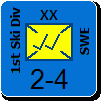
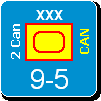
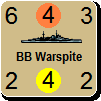

 Happy to go with Lars view on this if he has one.
Happy to go with Lars view on this if he has one. 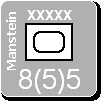




 More importantly, I think the Mulberries are too limited in their use. E.g. these NSU counters can be used anywhere, but towing the great concrete Mulberry structures any further than the few miles from England to France would surely have been impractical/impossible?
More importantly, I think the Mulberries are too limited in their use. E.g. these NSU counters can be used anywhere, but towing the great concrete Mulberry structures any further than the few miles from England to France would surely have been impractical/impossible? 
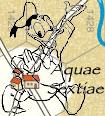
 (but I certainly missed others
(but I certainly missed others  )
)
 New Messages
New Messages No New Messages
No New Messages Hot Topic w/ New Messages
Hot Topic w/ New Messages Hot Topic w/o New Messages
Hot Topic w/o New Messages Locked w/ New Messages
Locked w/ New Messages Locked w/o New Messages
Locked w/o New Messages Post New Thread
Post New Thread